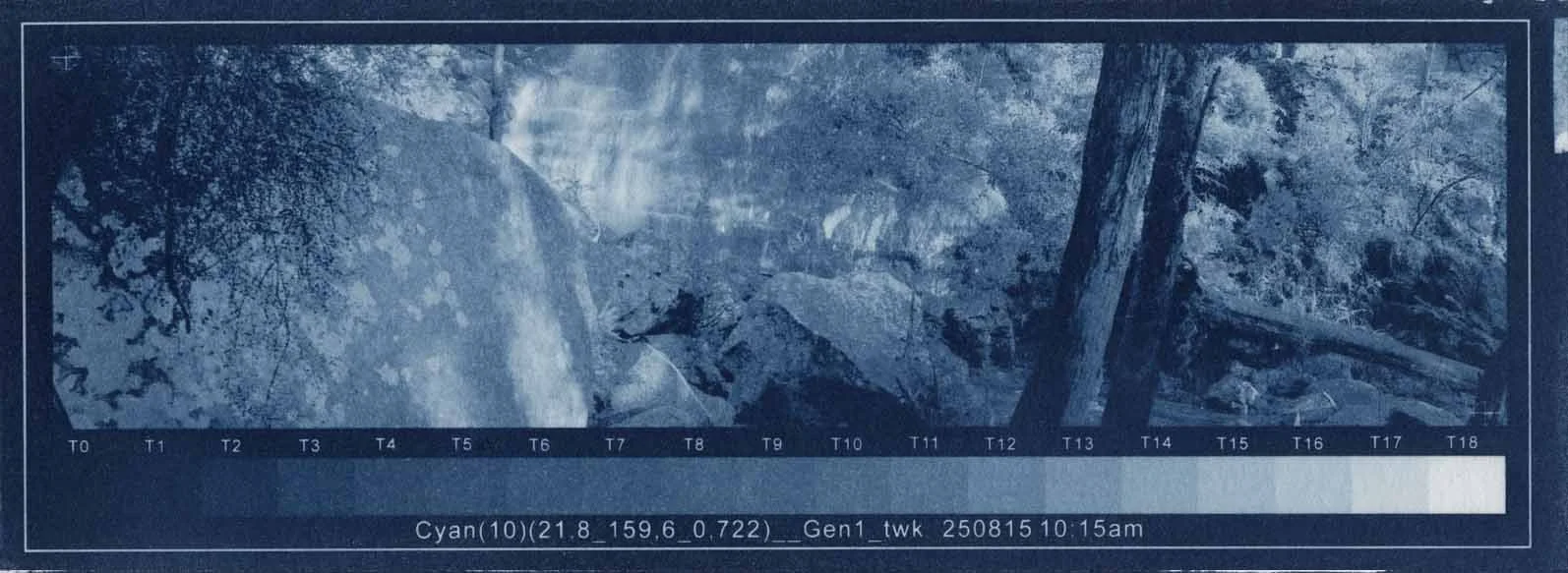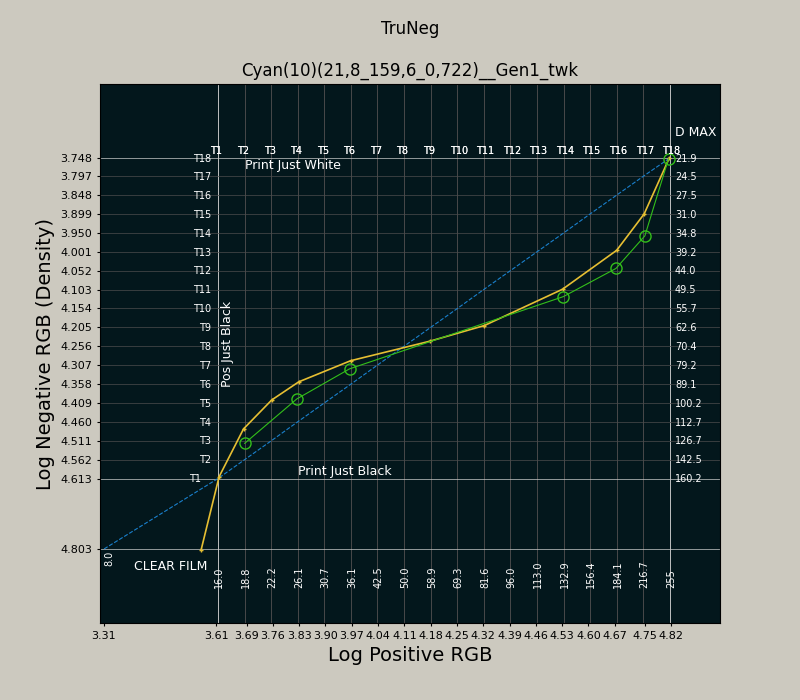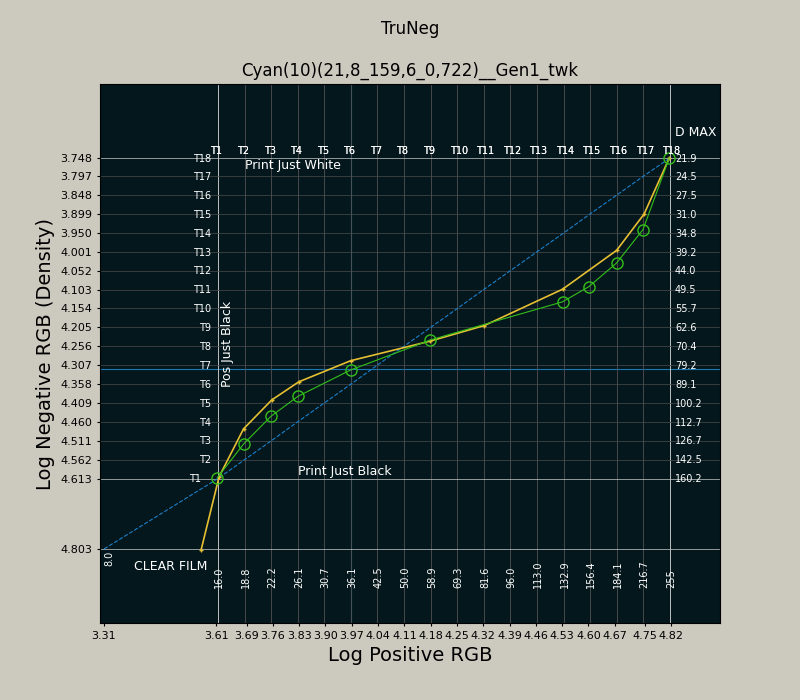Curves
Tweaking a Curve
Tweaking is the process of amending print tones. This is done in response to the user’s assessment of the print; if the shadows are too dark, they can be lightened by adjusting the preset curve, if too light, they can be darkened. The amount to amend the curve is determined by the number, or part number, of steps considered needed to lighten or darken the tone.
While this requires some practice and experience, it gives the user complete control over the print tones.
See below for an example of tweaking a Cyanotype.
Each grid line is marked with the tone T number, which corresponds to the step in the TruNeg stepwedge shown below the plot window. The reason the Y-axis notation is inverted is to align with the DLogE convention of the negative becoming darker as the exposure increases.
The preset used to convert the negative is plotted as a solid yellow line. The unprofiled inverted file is plotted as a dashed blue line.
The preset is amended by clicking on the plot. Clicking below the preset curve darkens the print; clicking above lightens it. Points can be added anywhere, between existing points, dragged by holding down the left mouse button, and removed by right-clicking. The only limitation is that they cannot be closer than approximately half a grid space to each other.
The new preset is saved by clicking on or just below the line marked “Clear Film,” which corresponds to the negative pixel value RGB 255.
The plot axes are labelled in log 16-bit RGB. The corresponding 8-bit pixel values are shown within the plot area. To convert an 8-bit value to a 16-bit value, divide the 8-bit value by 255 and multiply by 65535
Description of the plot window
Tweaking a Cyanotype
Test prints should be made with the TruNeg template in order to identify the tone numbers to be corrected.
On assessing the Cyanotype, the calibration looks good with T1 just visible from T0, but T17 is perhaps a bit light when compared with the original; overall, the highlights and shadows are clearly too light. Comparing the print stepwedge with the original image stepwedge, it can be seen that the tones that need darkening are around T14/15/16 and T4/5/6.
The negative values that produce the print tone are where the yellow plot crosses the vertical positive grid line. To darken T16 one tone to T15, align the vertical hairline cursor on the T16 grid line and the horizontal hairline at the intersection of the yellow preset plot and the positive T15 grid line. Clicking the left mouse button creates a new control point marked by a green circle.
Similarly, to darken T4 to T3, align the vertical cursor line along the T4 grid line and the horizontal T3 hairline with the intersection of the preset plot and the positive T3 grid line. Clicking the mouse generates another control point and a green plot line between the two points.
Gradually smooth out the new curve by adding points, making sure that the two original control points are not altered. and that the curve passes through the existing T9 and T10 points to maintain the existing midtone.
Finish the curve and save it by clicking on or just below the clear film line, which is always the last point entered.
The before-and-after prints are shown below.








